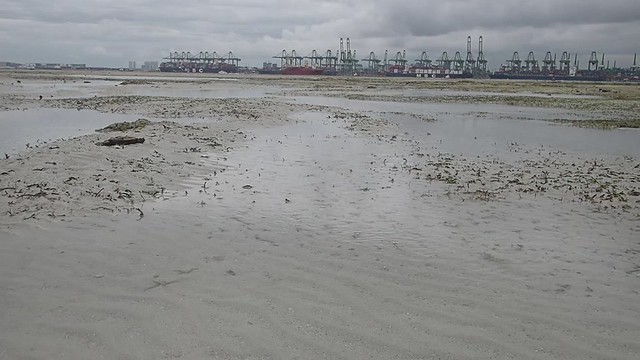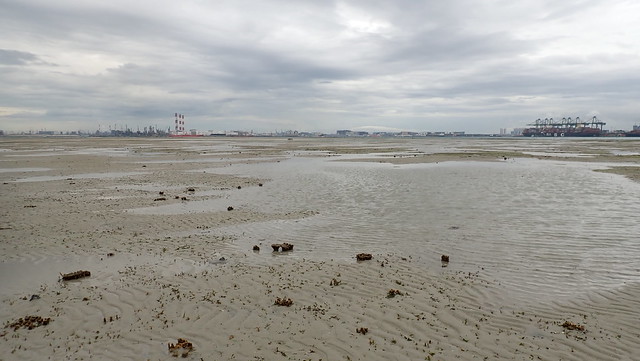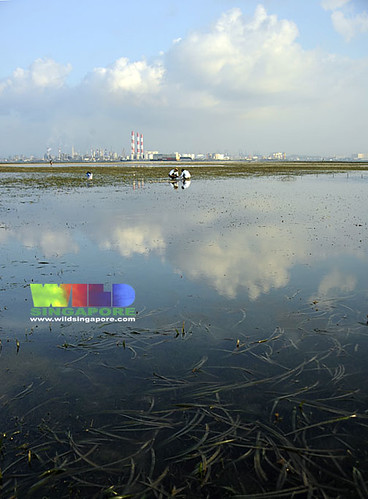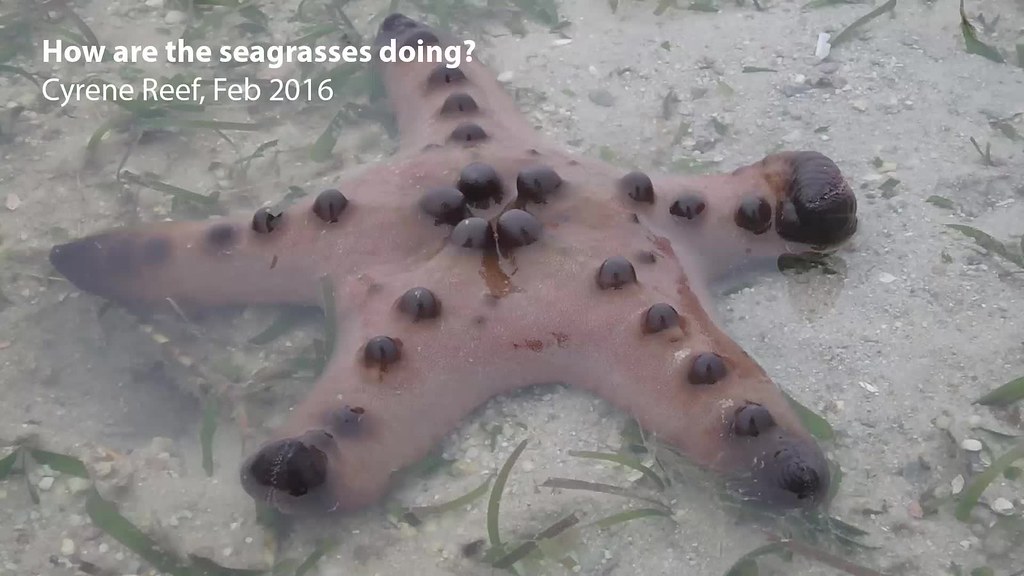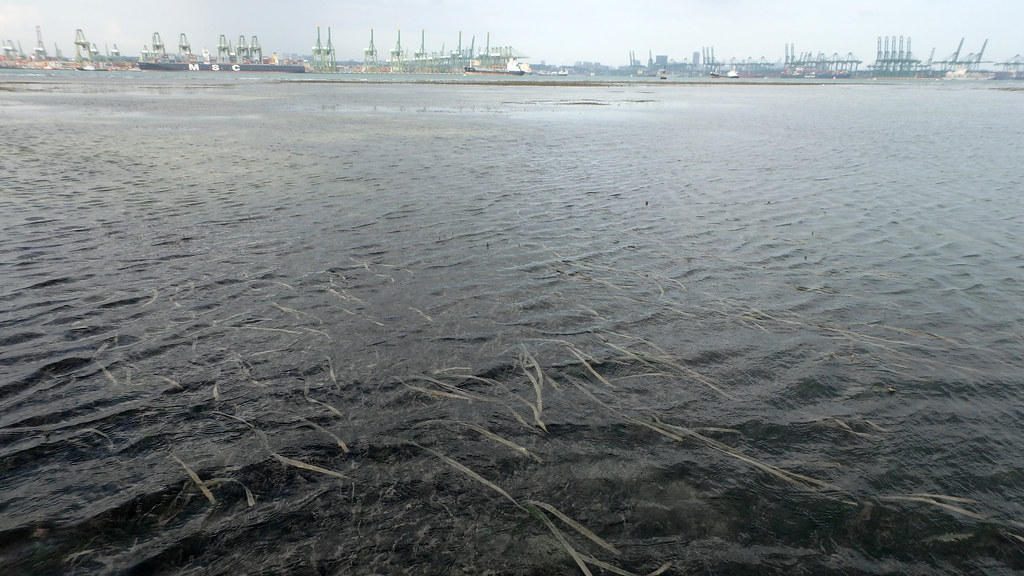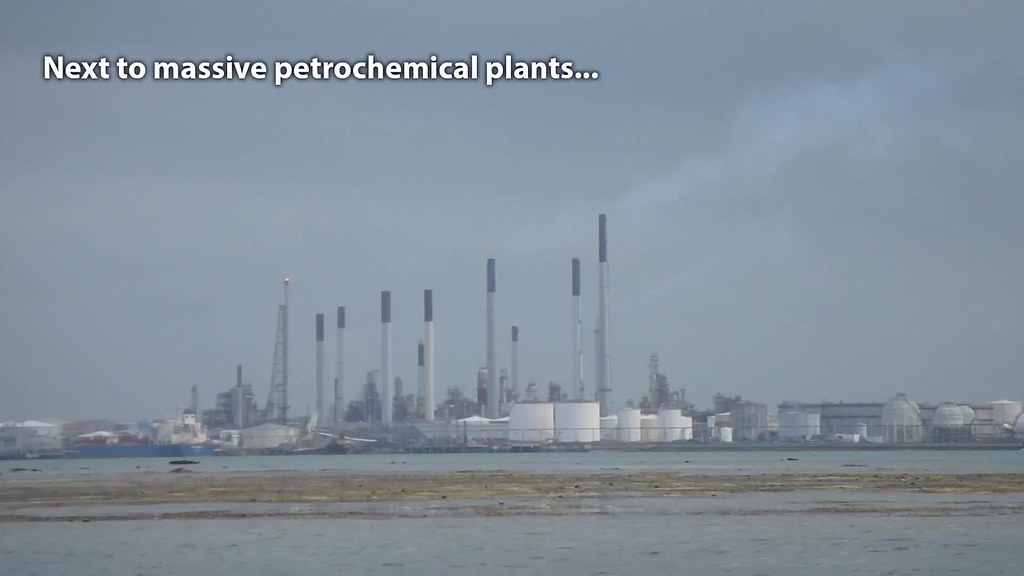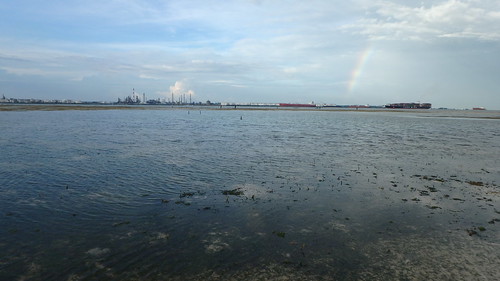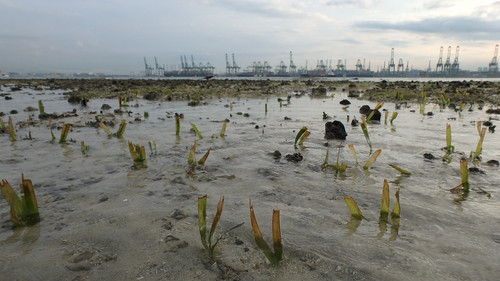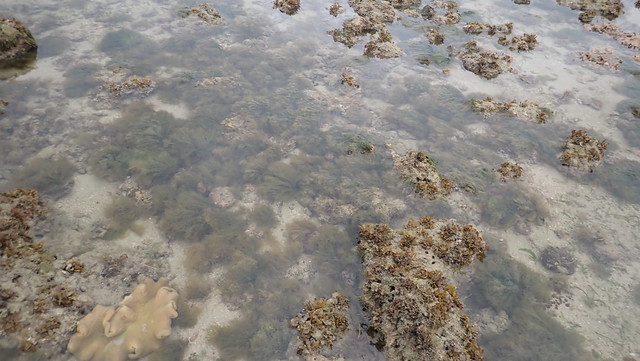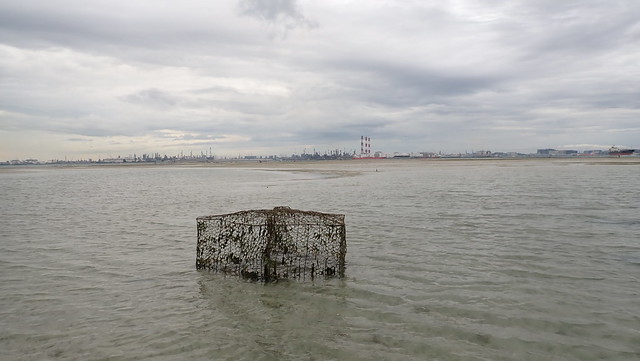For the second time, we landed on the eastern end of Cyrene, where it is rockier and reefier. It was good to see some large corals and that they were not bleaching. But the seagrasses don't seem to be doing well.
It was great to see lots of Knobbly sea stars near the beacon. Since our Jun 2019 survey, it seems that there more Knobbly sea stars gathered on the eastern end of Cyrene than where we usually find them, on the western end. Also, there seems to be much fewer of them. There is ongoing reclamation at Jurong near the western end of Cyrene. Is that a reason for this situation?
Cyrene usually doesn't have a lot of corals. But the eastern end seems to have more corals. As usual, today, the large corals I saw were mostly Pore corals and Merulinid corals of various kinds. It was nice to come across one Circular mushroom coral. I saw several Small goniopora corals, one Anemone coral, a few Flowery disk corals, some Cauliflower corals. All the corals seemed to be doing well and I didn't see any that were bleaching.
There were also many medium to large colonies of leathery soft corals of various kinds. I saw several Aspargus flowery soft corals that were nice and purple and not bleaching. And also one Leathery sea fan.
Here's a glimpse at some of the corals hard and soft that I saw at Cyrene.
The special find for me was this nudibranch, which I haven't seen on Cyrene before.
I also saw this nudibranch which is commonly seen on our other shores too.
I saw the predatory Orange-mouth olive snail prowling the sandy shore for buried prey. While this snail is commonly seen on Cyrene, we seldom see it elsewhere. The rest of the team saw lots of other interesting marine life, but sadly, none of us saw a Giant clam.
I briefly checked the seagrass situation on the eastern side of Cyrene. While there are some seagrasses especially on the reef edge, these are sparse. I didn't see any dugong feeding trails.
I didn't see any long Tape seagrass, I only saw some clumps that were badly cropped. I saw many patches of burnt seagrassess of various kinds. I've been seeing this since 2018 and throughout 2019.
Most of the centre of Cyrene seems rather bare of seagrasses. Oh dear.
Seagrasses in the deep pool over the years
I had a look at the deep pool that used to have very long Tape seagrasses. In 2010, the seagrasses in the deep pool drastically declined (together with general loss all over Cyrene) and the pool turned into a sandy one with hardly any seagrass. Here's a look at the deep pool over the years, at its best and its sudden death.
This is what the pool looked like in Jun 2009, with Jeff and Collin of NParks doing a survey of the abundant variety of fishesfound in the pool.
Aug 2010: The pool is still full of lush long Tape seagrass. In this photo, an NPark's team is gently doing a survey of the fishes that are found in the pool. More in this blog post.
May 2010: NParks continued their fish survey and found many different kinds here.

May 2012: It turned into a rather clear pool with the white sandy base showing, and no long Tape seagrasses. Although the Tape seagrasses are still there (but short) and there are some other kinds of seagrasses growing at the bottom, and especially at the shallower edges.
Mar 2012: The big pool which used to be full of long lush Tape seagrass remains bare of Tape seagrasses. But other seagrass species are growing on the sandy bottom.
Aug 2012: There are still lots of seagrasses at the edges of the pool. But in the deeper part of pool, it's very bare of seagrasses. Tape seagrasses here are still cropped short, with not much of other kinds of seagrasses.
Apr 2013: We checked the pool in the middle of the Reef and it's still rather bare. Although there are other kinds of seagrasses especially around the shallower edges, the Tape seagrasses here are still very short, even in deeper parts of the pool.
Aug 2015: Finally, five years later, on this trip I was so relieved to see much more seagrasses growing in the deep pool.

Feb 2017: I saw long Tape seagrasses growing from lush meadows of other seagrass species which are shorter. It looks almost like it used to in 2010.
Here's a video of the deep pool in Feb 2017.
Aug 2017: I had a look at the deep pool that used to have very long Tape seagrasses. While it is no longer a bare sandy pool and there are shorter species of seagrasses growing at the bottom, I did not see any long Tape seagrasses. I did see long Tape seagrasses in Feb 2017, perhaps today the tide was higher?
In fact, most of the Tape seagrasses I saw today were still cropped.
Today Feb 2020, it very sandy with only a thin and sparse cover of seagrasses. This is so sad.. Something happened in 2018 and 2019 that seems to have affected the seagrassess.
Is reclamation on Jurong Island impacting Cyrene?
A large area on Jurong Island (Ayer Merbau Basin) near Cyrene was being reclaimed - area outlined in red in this map on the MPA websitein Jun 2019. This area is no longer outlined on the MPA website today.
 |
| Image from the MPA website |
 |
| From Port Marine Notice 109 of 2018. |
Today there was a bloom of Bryopsis seaweed on some parts of the rubbly shore.
I came across a huge fish trap in the the deep pool.
There were two pufferfish and one stingray still alive in the trap. And one dead butterflyfish. I released the living fishes.
I also noticed two small holes that were clearly excavated in the coral rubble. I'm not sure who or what did it and why.
Wet weather hung over Jurong Island and Cyrene Reef in the early part of our survey. But cleared up once we landed.
I hope this amazing reef stays safe until we return again.
Photos by others on this trip
Jianlin Liu
Loh Kok Sheng and more photos
Marcus Ng
Toh Chay Hoon
Jesselyn Chua
Yeo Jing Ying
Shawne Goh
Leon Tan
Jonathan Tan








